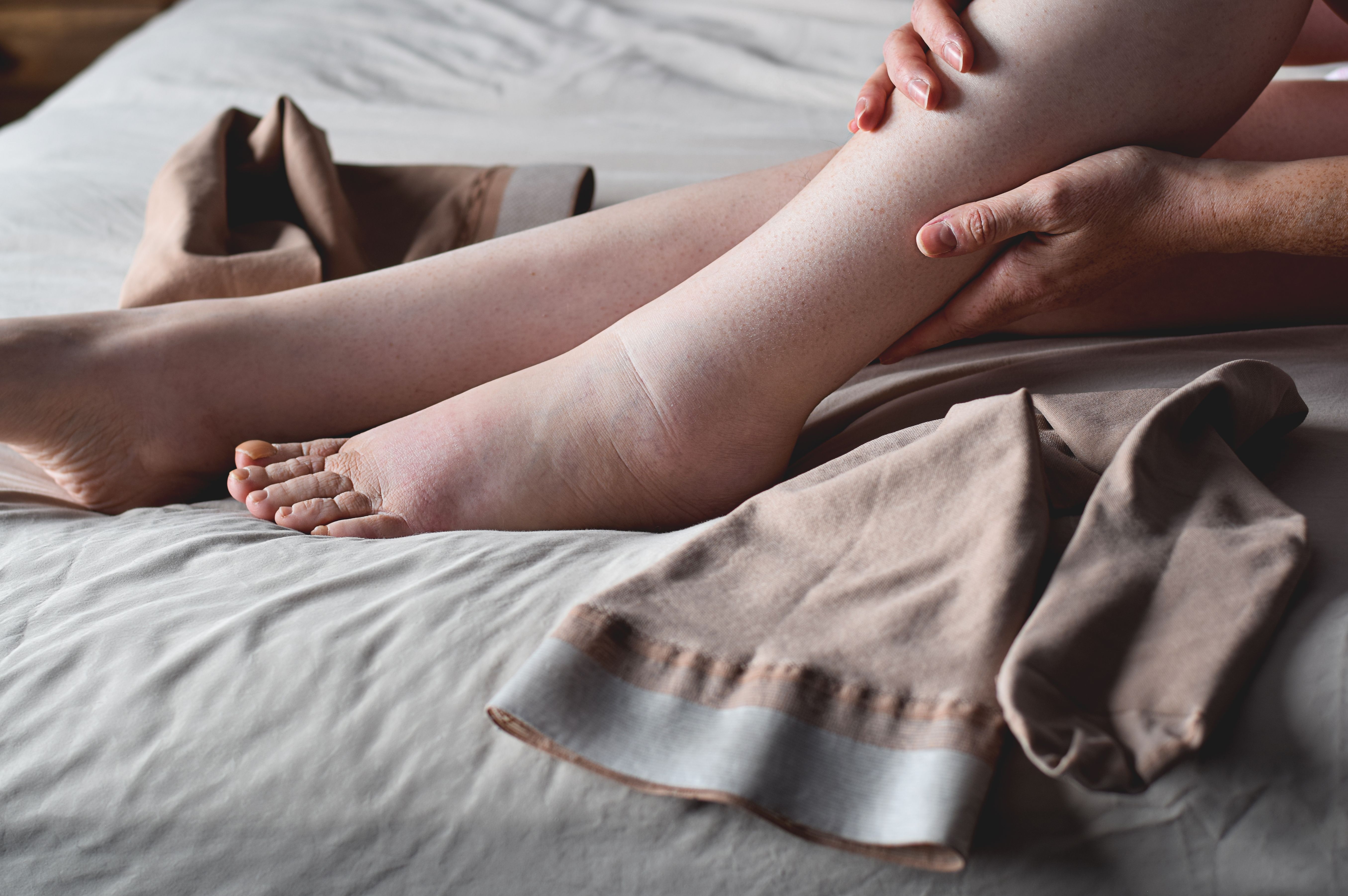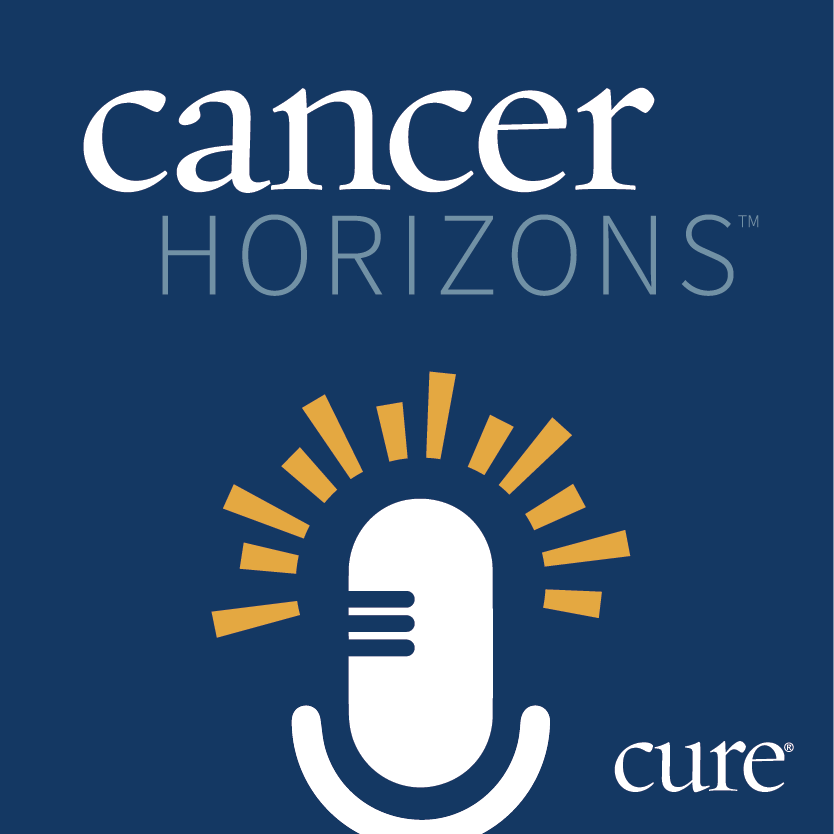News
Article
Raising Awareness for Lymphedema Following a Cancer Diagnosis
Key Takeaways
- Lymphedema results from lymphatic fluid buildup due to damaged lymph nodes, often from cancer treatment, leading to swelling and complications.
- Early detection and management are crucial, as lymphedema progresses from reversible to chronic stages, requiring lifelong management.
Dr. Sheri Yolanda Prentiss explores the challenges patients face in accessing lymphedema compression garments following cancer treatment.
An expert explores the challenges patients face in accessing lymphedema compression garments following cancer treatment.

Lymphedema is swelling that happens when fluid builds up because it cannot drain properly, often due to cancer treatment, according to the Mayo Clinic website, and usually affects the arms or legs but can also occur in other areas. If severe, it can make movement difficult, increase infection risk and cause skin changes. This side effect of treatment is a serious yet often overlooked condition that can significantly impact the quality of life for patients with cancer, prompting the yearly observation of Lymphedema Awareness month in March.
In an interview with CURE, Dr. Sheri Yolanda Prentiss explores the challenges patients face in accessing compression garments, which are vital for managing lymphedema, as well as shares her firsthand experience with lymphedema. She also went on to ddiscusses the impact of the Lymphedema Treatment Act, which has improved coverage for Medicare patients, while acknowledging the ongoing gaps in access for those with Medicaid or private insurance.
Prentiss currently serves as the chief medical and equity officer at Culture+; chief resilience officer at ENOUGH Global; president and chief executive officer at S. Phillips Consulting LLC; and an adjunct assistant professor at the University of Illinois School of Public Health, in Chicago.
CURE: Can you explain what lymphedema is? What steps can patients take to ensure they're screened before starting treatment?
Prentiss: Lymphedema is a buildup of lymphatic fluid that can occur when lymph nodes have been damaged. They can be damaged by the cancer itself, surgery, chemotherapy, radiation, or a combination of these factors. This buildup of lymphatic fluid leads to swelling.
Lymphedema occurs in stages, ranging from stage zero to stage three. In the first two stages, zero and one, swelling is not visible, and the condition is reversible. However, by stage two, lymphedema becomes irreversible and develops into a chronic disease that requires lifelong management.
Here is the thing. Patients are now in a world where they must advocate for themselves. Physicians, nurse practitioners, and physician assistants [are managing] an increasing volume of patients while handling extensive documentation, all while navigating their own lives. I admonish every patient to advocate for themselves and ensure they are screened.
The first question you should ask yourself is: What am I doing to ensure the best possible survivorship? Once you have been diagnosed with cancer, your care team’s primary focus is eradicating cancer cells. However, in that effort, other conditions — such as lymphedema — may be overlooked if you are not proactive. These conditions can significantly impact survivorship.
To ensure proper monitoring, you should ask your care team three key questions at your very first appointment, regardless of whether you are seeing a surgical oncologist, medical oncologist, or radiation oncologist. All three should be able to answer these questions:
No. 1: Do you have a lymphedema management program? If not, where can I go for lymphedema care?
No. 2: What tools do you use to monitor for early detection of lymphedema? Specifically, do you offer L-Dex testing using a SOZO device?
No. 3: How long do you monitor lymphedema patients?
These three questions are essential to ensure proper lymphedema monitoring and management.
What early warning signs should patients look for when thinking about lymphedema?
The signs you look for with lymphedema can mimic the signs patients experience with neuropathy. If you were treated with chemotherapy, neuropathy is a very real complication. You might feel a pressured sensation in the affected limb. You might feel a swollen sensation in that affected limb, but visually, it doesn't look swollen; it just feels like it's about to burst. You might have burning, numbness, tingling, or shooting pain in the affected limb. Given that these symptoms can mimic neuropathy, patients sometimes assume, “Ah, this must be my neuropathy.” Please, don't do that. Never assume a symptom is part of another disease process. Always assume it could be something new, especially in the first three years of treatment.
The key with lymphedema is that you don't want to rely on visually noticing signs, because by the time you see even a slight bit of swelling in your right hand compared to your left, or your right arm compared to your left, lymphedema has already set in. It's irreversible. There's nothing you can do at that moment. So, while there are things you could look out for, that really isn't the best way to monitor for lymphedema.
What are the most effective prevention strategies? What about management strategies that are available for patients who do develop lymphedema?
[We should] start with prevention, because if we can focus on prevention, we don't even have to worry about treatment and management. Regarding detection, remember what I said: it's very important to ask your cancer care team if they have a lymphedema management or monitoring program. The key with this monitoring program is being able to detect the slightest difference between the affected limbs, so you can effectively implement home intervention and never have to worry about chronic lymphedema.
Historically, measurements were done with a tape measure. Some facilities still use this method. It was the best tool healthcare professionals had to monitor swelling or size changes between limbs. For me, my breast cancer was on the right, so my lymphedema affected my right arm, hand, and fingers. Therefore, it was crucial to measure my right arm, hand, and fingers compared to my left. When using tape measures, if different people take the measurements, that introduces bias. Even if the same person takes the measurements, but they don't measure at the exact same point on the finger, arm, or hand, that can also create bias.
However, there's a technology called bioimpedance spectroscopy, but commonly referred to as BIS technology. This technology can detect as little as 2.4 tablespoons of fluid difference between limbs, allowing intervention before visible swelling occurs. This technology can detect lymphedema in stages zero and one, and with simple at-home intervention, patients—a large clinical trial showed that 92% of patients who received early intervention did not progress to chronic lymphedema.
Compression garments are a key component of lymphedema management, but they are not always accessible to underserved patients. What efforts are being made to improve access, and what can patients do if they face financial barriers?
That was a question I had when I was first diagnosed with lymphedema almost 15 years ago, and it's interesting that we're still asking the same question. Fortunately, we've had the passing of the Lymphedema Treatment Act, which has afforded patients on Medicare to have their compression garments and other lymphedema treatment devices covered. However, that leaves Medicaid patients uncovered, as well as patients receiving private insurance. Now, some private insurances are on board, but not every carrier and not every plan, and so many patients are without resources. I discovered this lack of resources when I was diagnosed and tried to find these garments.
I applied for them through my insurance, got denied, and I needed daytime garments and a special nighttime garment. My nighttime garment was custom and cost $2,500 fifteen years ago. Realizing this lack of financial help, in 2017, I founded the Live Today Foundation. It is a 501(c)(3) nonprofit organization that provides free compression garments to under-resourced patients with cancer— all cancers, not just breast cancer — living with lymphedema. I am so grateful that thus far, we've been able to give out over 700 sets of compression garments. I am thankful for our manufacturing partners and our corporate sponsor. Without our corporate sponsor's financial help, we wouldn't be able to do this, and without our manufacturer partners who donate a certain number of garments sets each year, we would not have been able to do it. There are still too many under-resourced patients out there who need these garments.
Live Today will continue to help for as long as I can keep it open. I realized that my diagnosis of breast cancer opened up my awareness to lymphedema. I was a treating physician. I rendered the diagnosis of cancer many times. I knew about lymphedema, but never knew I would be impacted. As a result, I have a passion for this. If you go to livetoday.org, there is a tab for free garment applications. You can go there. That's one opportunity [for access].
I also recommend that individuals reach out to their local breast cancer support groups. I recommend patients talk to their therapists and have those therapists reach out to the National Lymphedema Network. At one point, they were working on a program where therapists could complete a grant request for patients to receive garments for free. Outside of that, there's really no way for patients to get free compression garments, and there are too many cases out there for it to just be Live Today supplying them. This is a very serious disease, and there are millions of patients who need help.
For more news on cancer updates, research and education, don’t forget to subscribe to CURE®’s newsletters here.




